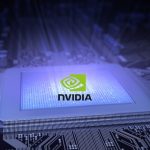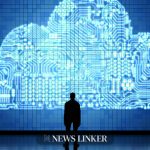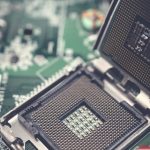Tesla engaged Wall Street perspectives by meeting with Piper Sandler, discussing the trajectory of several ambitious projects. These include the Tesla Semi, continued development of Optimus, an update on the Robotaxi service in Austin, and advancements anticipated for the Full Self-Driving (FSD) suite. The company appears to be maneuvering strategically to expand its presence in both logistics and autonomous vehicle technology, while weighing both internal deployment and broader market implications. Amidst ongoing industry change, Tesla’s communication signals to investors reflect cautious optimism and a methodical approach.
Reports in recent months had pointed to a measured approach to the Tesla Semi’s production timeline and suggested restrained expectations from external analysts regarding the truck’s mass adoption. The Optimus robot, while previewed as a futuristic product, had sparked speculation about its operational readiness and value outside factory settings. Robotaxi expansions were previously local and small-scale; the current outlined fleet growth and service area increases mark a notable shift compared to prior Tesla mobility launches. Across all fronts, regulators’ stance towards FSD remains an influential factor that has slowed Tesla’s full commercial autonomous rollout in past years. The current update emphasizes tested real-world safety and expanded software capabilities, signaling incremental progress rather than sudden leaps.
Tesla Semi Production Timeline Extends to 2026
The Tesla Semi, Tesla’s all-electric Class 8 truck, is slated for mass production in 2026 at a purpose-built facility near Gigafactory Reno, Nevada. Early operational deployments with brands like PepsiCo and Frito-Lay provided practical field data and have shaped company expectations for a broader launch. Piper Sandler anticipates significant scaling but maintains conservative forecasts regarding the truck’s market impact. Tesla’s Investor Relations team detailed proactive ramp-up preparations and described the initiative as a “major ramp,” while analysts still express cautious optimism.
“We’ve never expected much from this product, but we’d love to be proven wrong (Tesla is clearly prepping for a major ramp).”
How Is Optimus Being Used Within and Beyond Tesla?
Optimus, Tesla’s robotics project, has operated within company plants in limited capacities so far, primarily assisting with select tasks. Piper Sandler forecasts a gradual growth in its utilization, projecting that by 2026, the robot could handle moving and staging parts within Tesla’s facilities. Broader commercial relevance remains speculative, with its utility outside Tesla dependent on performance and pricing metrics.
“By this time in 2026, Optimus should be moving/staging parts within Tesla’s facilities.”
This expansion could address labor shortages and provide efficiency benefits if cost expectations align with operational value, especially if Optimus can deliver long unattended shift capabilities.
What Is the Scope of Tesla’s Robotaxi and FSD Rollout?
Tesla recently increased the geofenced area of its Robotaxi service in Austin, now covering approximately 170 square miles, which significantly surpasses the local coverage offered by competitors. Tesla also reported a 50 percent expansion of its Robotaxi fleet, though it withheld details regarding total vehicle numbers. The company confirmed that Full Self-Driving version 14 is expected to reach users by October, with increased parameter counts and intended improvements in responsiveness and user experience. CEO Elon Musk conveyed high expectations for the FSD update and suggested it could align consumer vehicle software with that powering the Robotaxi offering. Regulatory hurdles remain a barrier to nationwide adoption.
Tesla shows a calculated pace in deploying major products while managing investor outlook through regular updates and field test results. While some targets have shifted further into the future, particularly for the Semi, the company’s multi-pronged strategy underscores the diverse pathways it’s pursuing in logistics, automation, and autonomous mobility. Investors and analysts continue to monitor both operational progress and regulatory reception, especially for full autonomy.
For market participants, understanding Tesla’s parallel product lines—heavy-duty electric vehicles, humanoid robots, and ride-hailing Robotaxis—means keeping informed about readiness, pricing, and customer demand. For those tracking next-generation transport and factory automation, careful attention to regulatory signals and real-world performance data is warranted. As projects like the Semi and Optimus transition from pilot programs toward scaled deployment, both commercial and technological milestones will gauge Tesla’s competitiveness. Patience, and a focus on incremental improvement rather than rapid overhaul, appear to define Tesla’s current operational philosophy, a stance echoed by both company representatives and external analysts in recent discussions.










